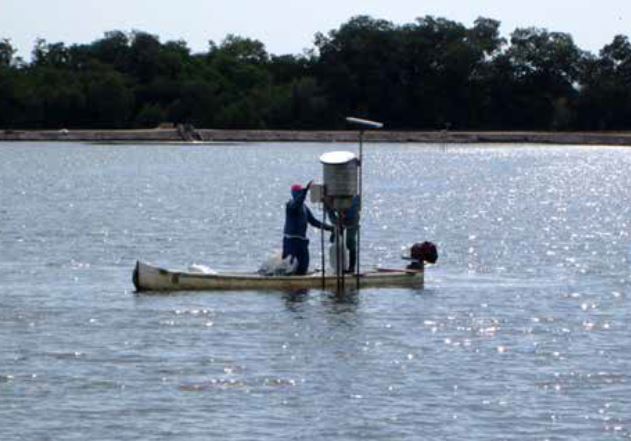Creating business intelligence for agricultural solutions
Working mainly with multi-national organisations, AZLOGICA’s provides asset management via its telematic software. With businesses across all sectors realising the potential benefits and opportunities that IoT can bring them, AZLOGICA has worked across government, agriculture, insurance and transport industries.
One example application in which AZLOGICA has worked is in the agriculture space and specifically that of shrimp production. Shrimps are now considered as the most lucrative sea food product with demand growing from consumers due to their high nutritional value. This is reflected in the export figures with the two largest exporters of shrimps, Ecuador and India, seeing increases of 7.6% and 10.8% respectively in the first half of last year, while the largest importers of shrimps all saw increases during the same period with Russia seeing the highest.
Due to their perishable nature, it is imperative for shrimp producers to maximise their profitability and reduce the risk of wasted stock either from theft, unfavourable weather conditions or a sub-optimal production environment – particularly with increasing demand and high revenue opportunities at stake. For this reason, Colombian shrimp producers, Oceanos, brought AZLOGICA onboard to help maximise efficiency and investment with the use of IoT throughout the production chain.
Two key areas Oceanos were keen to monitor were the production environment and ensuring security to reduce the theft risk. To ensure an optimal production environment, there are a number of metrics and factors to monitor both internal to Oceanos’ shrimp pools and external factors such as the weather. Metrics to measure within the shrimp pool vary from P.H. levels, to temperature and salinity while humidity, wind levels and precipitation all need to be taken into account from the weather perspective.
To manage and analyse the volume of data that all these sensors generate, AZLOGICA employ Dell Edge Gateways to transfer and aggregate the information to their cloud servers for central analysis. This information and resulting parameters are then able to trigger alarms remotely when sensors detect a variation which could put the shrimp production at risk. For example, if the P.H levels increase beyond a set threshold, the water fertilisation can be adjusted accordingly. Likewise, sensors and infrared cameras are used to detect the opening of gates to set the alarm for what could be a potential theft situation which historically have been Oceanos’ biggest source of loss.
The solution
Using Dell Edge Gateways as the hardware on which to run their software platform and enable their IoT offering, AZLOGICA understood its choice of operating system to accompany this was equally important. Having used alternative Linux distributions previously, AZLOGICA knew a reliable and stable operating system was required and it had been using Ubuntu, from Canonical, for two years across its desktops and servers on other projects.
For this Oceanos project, AZLOGICA turned to Ubuntu Core – designed specifically for IoT devices and solutions. AZLOGICA’s R&D team found Ubuntu Core to be an integral platform to minimise time to market which was particularly important as one of the promises to customers is to deliver a fast payback on investment and high ROI. Utilising Ubuntu across its desktops, servers and Ubuntu Core on the Dell Edge Gateways meant the R&D team could benefit from a faster learning curve plus better integration and resource optimisation. As AZLOGICA use a horizontal platform to integrate and customise each solution required, Ubuntu and Ubuntu Core helped to improve its platform resulting in optimisation for existing processes and solutions to improve time to market for oncoming projects.
Edgar Salas, General Manager, AZLOGICA, commented: “Using Ubuntu Core enables us to deliver our customers tailored solutions with a very quick time to market and high ROI in a range of IoT applications. For us, it enables a trusted and reliable platform to work from which is versatile enough to apply to a number of industries. The Oceanos project is one example of this in practice. What is most exciting for us is we discover and co-create IoT solutions with our customers across a growing number of vertical solutions.”
With the adoption of Ubuntu Core, AZLOGICA also implemented snaps – the universal Linux packaging format. Specifically, the Mosquitto snap package was used, which enables data to be sent quickly to the cloud for analysis. Finally, the fact that Ubuntu Core was designed with security in mind was also a key benefit for AZLOGICA assuring the protection of their communications network including certificates.
The results
For Oceanos, this implementation allows AZLOGICA to give them a promised return on investment ten times greater than their previous processes and a payback time of six months maximum. The ROI is reflected in immediate theft reduction due to the rapid attention the early alerts provide. Theft reduction is lower than one percent of actual theft rate. On the production side, minimal losses in critical environmental situations through early alerts are guaranteed and planned to reduce 36% of derived losses. Production increases are up to 28% through the sensors checking water quality visualisation as shrimp algae consumption and water quality permit a quicker and bigger growth rate, which means better size and weight within the same period.
In addition to having successfully implemented Ubuntu Core and the Dell Edge Gateway in relation to Oceanos’ application, AZLOGICA are also using the same solution across other industries such as manufacturing and transport. In fact, AZLOGICA are also looking to unify its development in all gateways with the use of Ubuntu Core. Client customisation based on horizontal platforms is seen as their main route to conquer the Latin American IoT market.



